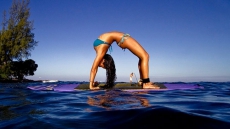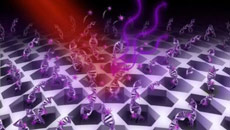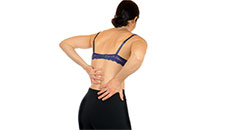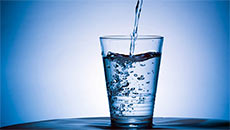What is Osteoporosis?
The word osteoporosis comes from the Greek word ‘osteon’ which means bone and ‘poros’ which means full of holes. Osteoporosis is a bone problem where bones are less dense, weaker and break more easily.
With age, bone has less mass and gets somewhat weaker for all people, but people that have osteoporosis have bones that are dangerously weak and brittle.
A person may not know that they have osteoporosis until they have a broken bone. In this article, we will talk about the risks of osteoporosis, how you can find out if you have it and what you can do to prevent or treat osteoporosis.
Are You At Risk?
Osteoporosis tends to affect people over 60 years old. In addition, more women than men have osteoporosis.
One of the reasons that more women get osteoporosis as they get older is because they have less estrogen. Estrogen is a reproductive system hormone that women need when they are of childbearing age. Women make less estrogen when they are older. As well as being important for reproduction, estrogen is involved with keeping bones healthy and strong. When less estrogen is being made, bones can become weak.
As I was looking for background material for this article, I noticed a lot of information about osteoporosis for European and East Asian women (descended from China, Korea or Japan), but very little information for South Asian women (India, Pakistan or Bangladesh). While it is known that people of European and East Asian descent have a greater risk for osteoporosis, people of South Asian descent are also at risk for osteoporosis. In all groups, women are at a greater risk for osteoporosis than men.
You are at risk for osteoporosis:
• If you are getting older (older than 60)
• If you are a woman that has gone through menopause (your monthly periods have stopped)
• If you have a family history of osteoporosis (for instance, a number of the older people in your family have had broken bones)
• If you have a slender body style (while this might be great for fashion, women that have a smaller body frame often have weaker bones)
• If you don’t get enough calcium or vitamin D in your diet
Why Know About Osteoporosis?
If you could see the inside of healthy bone, it would look firm and dense. The inside of bone with osteoporosis would look less dense, like it is full of holes. Bones that are less dense break more easily. And falls often cause broken bones.
When a bone breaks, it is called a fracture. Fractures are the main worry with osteoporosis. If people with osteoporosis break a bone, it is often in the hip, wrist or spine. You can likely think of a person you have known whose life has been affected by a hip fracture. After a fracture, older people may have less mobility and need more help to do the things they used to do on their own. You and your family members want to stay active and independent for as long as possible!
Finding Out If You Have Osteoporosis
There are ways to screen for osteoporosis. If you are older, it is a good idea to see if you might have osteoporosis or if you have osteopenia, a warning sign of osteoporosis. Osteopenia means that the bone is less dense, but is not yet at the point of osteoporosis. There are lifestyle modifications and treatments that can help if you have either problem. But first let’s talk about how to find out if you have osteoporosis or osteopenia.
Dual Energy X-ray Absorptiometry (DEXA) tests bone mass to find out if you have osteoporosis or if you are at risk for a broken bone (fracture). Osteoporosis Canada suggests that people older than 65 years have routine tests to measure their bone density or mass.
There are also assessment tools that can help health care professionals, like your doctor, find out whether you have an increased risk for osteoporosis. If you do have an increased risk, it might be good for you to have a bone density test even if you are younger than 65. For instance, if a woman has gone through menopause, has a slender body style and has a relative that has had a hip fracture, then that woman would benefit from screening at a younger age because she already has several risk factors for osteoporosis.
Keep in mind that if osteoporosis or osteopenia is found, you will be counselled to make lifestyle changes and possibly take medication in order to prevent further bone density loss and lessen your risk for bone fracture.
Exercises for Stronger Bones
Exercise prevents bone loss; however, there are certain types of exercise which can help more than others. Weight-bearing exercises and exercises that help to improve posture and balance are particularly good.
When you do weight-bearing exercises, your muscles and bones are working against gravity to hold the weight of your body up. Your body strengthens the bones and increases bone mass in response. Examples of weight-bearing exercises are walking, jogging, dancing, hiking and stair climbing. These exercises are particularly good for increasing or maintaining bone density in the spine and hips.
Exercises to help posture and balance are also good because they are often weight-bearing exercises and they can help to prevent falls. Examples of exercises to help with posture and balance would be yoga, step classes and dancing.
Keep in mind that for any of the exercises mentioned, if you already have decreased bone density some exercises can be risky for falls and broken bones. Check with your doctor about what exercises are best for you.
Building Bones with Diet
Calcium and vitamin D are both important for maintaining bone health and preventing osteoporosis. Your bones are living. They go through a renewal process once every few months. Old bone is taken away and new bone is laid down. With aging, the process of taking old bone away and laying down new bone can get out of balance. Getting enough calcium, which is a building block for bones, is important as your body makes new bone. Unfortunately, with aging we absorb less calcium from foods we eat.
The Canada Food Guide recommends that adults 19 to 50 years old get two servings of dairy products per day and that adults over 50 get three servings. This means that you should have two to three servings of milk, yogurt or maybe cheese (but watch the fat!) every day. Skim milk has as much calcium as whole milk without the fat. Low fat yogurt is a good choice as well, but some flavoured yogurts are full of sugar, so be careful. The Canada Food Guide can be found on the Health Canada website and can be printed out.
The very best place to get calcium is from dairy products, but not all individuals can tolerate dairy products, and not all individuals want to take in the amount of dairy products needed. There are other foods that contain calcium such as almonds, canned fish (with the bones) and some beans and peas. The Osteoporosis Society of Canada has a list of foods that are sources of calcium. Some orange juices, soy milks, almond milks are ‘fortified’ beverages, which means that calcium has been added. Read the labels to find out if a beverage is ‘fortified.’
Calcium supplements may be recommended. Your body has a harder time using the calcium found in supplements than it does the calcium from foods and dairy products. Despite this, if you have osteoporosis, or are at risk for osteoporosis, you want to do everything you can to maintain bone mass. Ask your pharmacist or doctor about the best type of calcium supplements.
Vitamin D, sometimes called the sunshine vitamin, is needed to make use of the calcium you take in. Few foods contain vitamin D, but your body can make vitamin D by exposure to sunlight. If you live in a part of the country that doesn’t get much sunlight, or if you cover up or avoid the sun, this source of vitamin D is decreased. Many dairy products have added vitamin D for this reason. Vitamin D can also be obtained through supplement pills.
While there is some recent debate about the amount of vitamin D that a person should take, it is still recommended that you take vitamin D if you live in a part of the country that does not get much sun (like the Lower Mainland in BC)! Talk to your pharmacist or doctor about taking vitamin D for bone health.
Treating Osteoporosis
If you have been told by your doctor that you have osteoporosis, then you may already be on a special drug therapy. Bisphosphonates are a common type of drug used to treat osteoporosis. Bisphosphonates work by slowing down the natural process whereby old bone is destroyed. This gives the cells that are in charge of making new bone a chance to build up your bones.
If you are a woman who has gone through menopause and you have osteoporosis, you may be on a drug in the class known as SERMs. These drugs have the same effect as estrogen does to increase bone density. Furthermore, if you have gone through menopause you may be on hormone replacement therapy (HRT). The estrogen in HRT is good for bone health, but HRT can be a risk for breast cancer and cardiovascular disease. Talk you to your doctor about the risks and benefits of this therapy.
There are newer drugs used to treat osteoporosis, such as bone metabolism regulators. You and your doctor can talk about what drug therapy is best. As well, if you are already on a drug for osteoporosis, your pharmacist can answer questions about how the drug works, what side effects to watch for and how to take the drug properly.
More Information Please
There are some excellent places where you can find more osteoporosis information. Osteoporosis Canada and HealthLink BC are two of these resources. For more information on this topic or references for this article, please contact Catherine Bock at catherine.bock@kpu.ca






